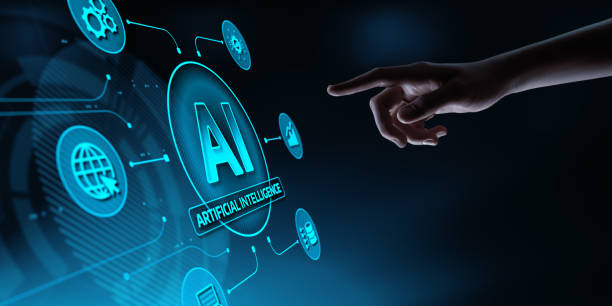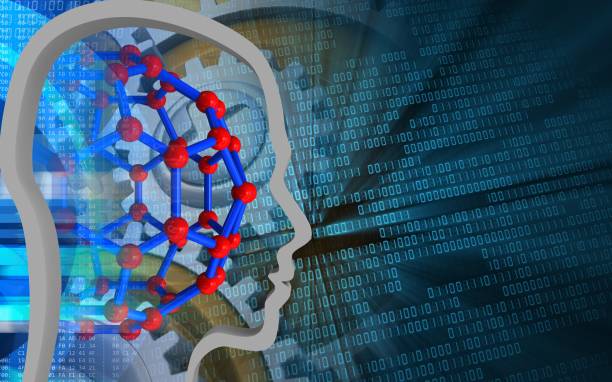What is Artificial Intelligence? Definition and Basic Concepts
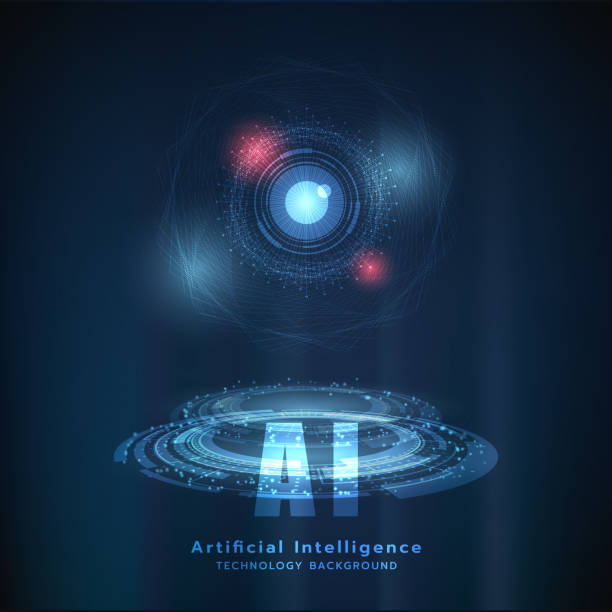
#Artificial_Intelligence (AI) is a branch of computer science that seeks to build machines capable of performing tasks that typically require human intelligence.
These tasks include learning, problem-solving, pattern recognition, natural language understanding, and decision-making.
AI strives to develop systems that can think, reason, and act as if they were human.
In essence, the main goal of AI is to mimic or surpass human cognitive abilities.
Artificial Intelligence is broadly divided into two categories: Narrow AI and General AI.
Narrow AI is designed to perform specific tasks and excels within that domain.
Examples of Narrow AI include facial recognition systems, voice assistants like Siri and Alexa, and movie and music recommendation systems.
In contrast, General AI is capable of performing any intellectual task that a human can, and even surpass it.
General AI is still in theoretical stages and has not yet been fully realized.
Machine Learning is an important subfield of Artificial Intelligence that allows machines to learn from data without explicit programming.
Machine learning involves algorithms that can identify patterns and relationships in data and make predictions or decisions based on them.
Deep Learning is also a subfield of machine learning that uses artificial neural networks with many layers to analyze data and performs exceptionally well in areas such as image recognition and natural language processing.
Are visitors leaving your e-commerce site before making a purchase? Don’t worry anymore! With Rasaweb’s professional e-commerce website design services, solve the problem of not converting visitors into customers forever!
✅ Significant increase in conversion rates and sales
✅ Unparalleled and engaging user experience
⚡ Contact us now for a free consultation!
Applications of Artificial Intelligence in Various Industries
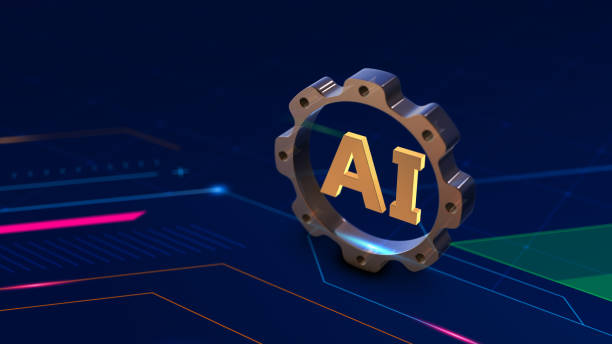
Artificial Intelligence is rapidly penetrating various industries and having profound effects on how we work and live.
In the #healthcare sector, AI is used for diagnosing diseases, developing new drugs, and improving patient care.
AI systems can analyze medical images such as MRI and CT scans, helping doctors diagnose diseases more accurately and quickly.
Furthermore, AI plays a crucial role in developing new drugs by analyzing genetic and molecular data to identify more effective drug compounds.
In the #automotive industry, AI is used for developing self-driving cars.
Autonomous vehicles are equipped with AI systems that can understand their surroundings and drive without human intervention.
This technology can help reduce road accidents, improve traffic, and decrease fuel consumption.
Additionally, AI is utilized in automotive production lines to optimize manufacturing processes and enhance product quality.
In the #finance sector, AI is employed for fraud detection, risk management, and providing financial advisory services.
AI systems can analyze banking transactions and identify suspicious patterns, which helps reduce financial crimes.
Moreover, AI can analyze financial data to assist investors in their investment decisions.
Furthermore, AI has extensive applications in other fields such as #education, #agriculture, and #manufacturing.
In education, AI can provide personalized learning systems that help students learn at their own pace.
In agriculture, AI can assist farmers in better farm management and increasing productivity.
And in manufacturing, AI can optimize production processes and reduce costs.
Advantages and Disadvantages of Artificial Intelligence
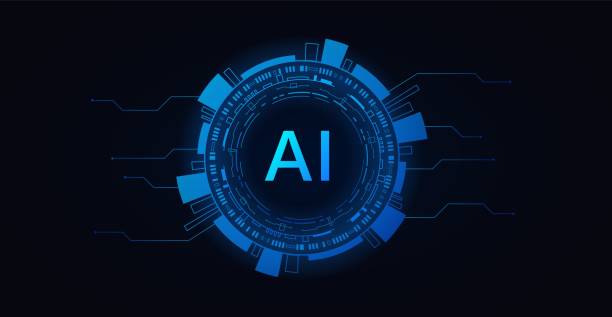
Artificial Intelligence, like any other technology, has its own advantages and disadvantages.
Among the #advantages of AI are increased productivity, reduced costs, improved accuracy, and better service delivery.
AI systems can perform repetitive and tedious tasks faster and more accurately than humans, leading to increased productivity and cost reduction.
Furthermore, AI can analyze large datasets and identify patterns that humans are unable to detect, resulting in improved accuracy and better service provision.
For example, in the medical industry, AI can analyze medical images with higher accuracy, assisting doctors in faster and more precise disease diagnosis.
In the manufacturing industry, AI can optimize production processes and enhance product quality.
And in the customer service industry, AI can answer customer questions and resolve their issues, leading to improved customer satisfaction.
However, Artificial Intelligence also has #disadvantages.
These include job displacement, ethical concerns, and security risks.
With the advancement of AI, many jobs previously performed by humans are now being done by machines and AI systems, leading to job losses and increased unemployment.
Furthermore, AI can raise many ethical concerns, such as algorithmic bias, data privacy, and accountability for erroneous decisions.
Moreover, AI can also create numerous security risks.
AI systems can be targeted by hackers and used for malicious purposes.
For instance, facial recognition systems can be used to monitor individuals and violate their privacy, and autonomous systems can be hacked and used to cause traffic accidents.
And now, the threats of Artificial Intelligence to humanity!
| Advantages | Disadvantages |
|---|---|
| Increased productivity | Job displacement |
| Reduced costs | Ethical concerns |
| Improved accuracy | Security risks |
| Better service delivery | Algorithmic bias |
Challenges in Developing and Implementing Artificial Intelligence
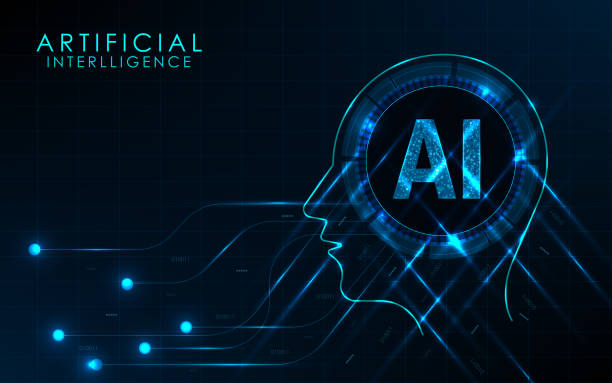
The development and implementation of Artificial Intelligence face numerous challenges.
One of the biggest challenges is the scarcity of training data.
AI systems require a large volume of training data to learn and function correctly.
Collecting and preparing this data can be time-consuming and costly.
Furthermore, training data must be of high quality and include accurate and valid information.
If training data is incomplete or inaccurate, AI systems will not be able to learn properly and will perform poorly.
Another challenge is the shortage of AI specialists.
Developing and implementing AI systems requires high levels of knowledge and expertise.
Given the rapid growth of AI, the demand for AI specialists far exceeds the supply.
This shortage of experts can hinder the widespread development and implementation of AI.
Furthermore, ethical and legal issues are also significant challenges in the development and implementation of AI.
The use of AI can raise many concerns regarding data privacy, algorithmic bias, and accountability for erroneous decisions.
To address these concerns, appropriate laws and regulations for the use of AI must be formulated.
In addition to technical and ethical challenges, organizational and managerial challenges also exist in AI implementation.
Organizations must develop appropriate strategies for AI implementation and ensure that AI systems align with organizational goals.
Moreover, organizations must adapt their organizational culture to embrace innovation and experimentation.
Does your current website convert visitors into customers, or does it drive them away? With Rasaweb’s professional corporate website design, solve this problem forever!
✅ Building strong credibility and branding
✅ Attracting targeted customers and increasing sales
⚡ Get a free consultation now!
The Future of Artificial Intelligence: What to Expect

The future of Artificial Intelligence looks very bright and promising.
AI is expected to advance rapidly in the coming years and have profound impacts on our lives.
In the future, AI will play an even more significant role in various sectors such as healthcare, education, transportation, and manufacturing.
AI systems will be able to diagnose diseases with greater accuracy, provide personalized education, navigate self-driving cars, and optimize production processes.
One of the most significant developments in the future of AI is the advancement of General AI.
General AI will be capable of performing any task that a human can, and even surpass it.
If General AI is realized, it could bring about immense transformations in our lives and help solve many of the world’s major problems.
However, the development of General AI also comes with risks.
If General AI is not properly controlled, it could pose a threat to humanity.
Therefore, it is essential that AI research and development are conducted with care and responsibility, ensuring that this technology is used for the benefit of humankind.
Overall, the future of Artificial Intelligence is very exciting and full of opportunities and challenges.
By developing and implementing AI, we can improve our lives and help solve many of the world’s major problems.
However, it is crucial to develop this technology with caution and responsibility and prevent its potential risks.
| Sector | Predictions |
|---|---|
| Healthcare | More accurate disease diagnosis, new drug development, robotic surgery |
| Transportation | Self-driving cars, intelligent traffic management, accident reduction |
| Manufacturing | Full automation of production lines, predictive maintenance for machinery, quality improvement |
| Education | Personalized learning, smart educational systems, easy access to learning resources |
| Customer Services | Fast and accurate responses, resolution of complex issues, improved customer experience |
Ethics in Artificial Intelligence: Challenges and Considerations

Ethics in Artificial Intelligence is one of the most important and challenging topics in this field.
With the advancement of AI, many concerns have arisen regarding the technology’s impact on society and human rights.
One of the most significant concerns is algorithmic bias.
AI systems, based on biased training data, might make decisions that lead to discrimination against specific groups of people.
For instance, facial recognition systems may have lower accuracy in recognizing individuals with darker skin tones, which can lead to discrimination in employment, law enforcement, and other areas.
Another concern is data privacy.
AI systems require a large volume of personal data to learn and function correctly.
The collection and use of this data can raise many concerns about individuals’ privacy.
Appropriate laws and regulations for the collection and use of personal data must be developed to ensure that individuals’ privacy is protected.
Accountability for erroneous decisions is also another ethical challenge in AI.
If an AI system makes a wrong decision that causes harm, who will be responsible?
Is it the system’s developer, the system’s user, or the system itself? These questions still lack definitive answers and require further discussion and examination.
Furthermore, the use of AI in weaponry is another ethical concern.
The development and use of autonomous weapons can lead to increased violence and reduced human control over warfare.
International agreements are necessary to limit the development and use of autonomous weapons.
To address these ethical challenges, it is essential that ethics in AI be considered a serious topic, and research and education in this area be expanded.
Moreover, engineers, scientists, and policymakers must collaborate to find solutions to these challenges.
Artificial Intelligence in Iran: Current Status and Outlook

Artificial Intelligence in Iran, like in other countries around the world, is rapidly developing.
The Iranian government and private sector have made significant investments in this area and are striving to utilize this technology in various fields.
Currently, AI in Iran has applications in sectors such as healthcare, transportation, and energy.
For example, in healthcare, AI systems are used for disease diagnosis and hospital management.
In transportation, AI systems are employed for traffic management and improving road safety.
And in the energy sector, AI systems are used to optimize energy consumption and reduce air pollution.
Iran possesses many talents in the field of AI, and many Iranian students and graduates are studying and researching in this area at top universities worldwide.
However, Iran also faces challenges in AI development.
One of the most significant challenges is the lack of investment.
Developing AI requires substantial investments in research and development, education, and infrastructure.
Another challenge is the shortage of AI specialists.
Given the rapid growth of AI, the demand for AI specialists far exceeds the supply.
Furthermore, economic sanctions are another challenge hindering AI development in Iran.
Sanctions prevent Iran’s access to advanced technologies and components needed for AI development.
Nevertheless, Iran is striving to overcome these challenges by relying on domestic capabilities and advancing in the field of AI.
The outlook for AI in Iran appears bright and promising.
Given the talents available in the country and the efforts of the government and private sector, AI is expected to play a more significant role in Iran’s economic and social development in the coming years.
By developing AI, we can improve our lives and help solve many of the country’s major problems.
Artificial Intelligence and its Role in Digital Transformation

Artificial Intelligence plays a very crucial role in digital transformation.
#Digital_transformation refers to the use of digital technologies to improve processes, products, and services.
AI can help organizations automate their processes, make better decisions, and enhance their customer experience.
For example, AI can help organizations analyze large datasets and identify patterns that humans are unable to detect.
These patterns can help organizations optimize their processes, reduce risks, and identify new opportunities.
AI can also help organizations improve their customer experience.
AI systems can answer customer questions and resolve their issues, provide personalized recommendations, and simplify buying and selling processes.
This can lead to increased customer satisfaction and sales.
Furthermore, AI can help organizations create new innovations.
AI systems can analyze large datasets and identify new ideas that humans are unable to conceive.
These ideas can help organizations develop new products and services that meet customer needs and create a competitive advantage.
To fully leverage the benefits of AI in digital transformation, organizations must develop appropriate strategies and ensure that AI systems align with organizational goals.
Moreover, organizations must adapt their organizational culture to embrace innovation and experimentation.
Does your current corporate website not reflect your brand’s credibility and power as it should? Rasaweb solves this challenge for you with professional corporate website design.
✅ Increase visitor credibility and trust
✅ Attract more targeted customers
⚡ Click for a free consultation!
Machine Learning and its Types
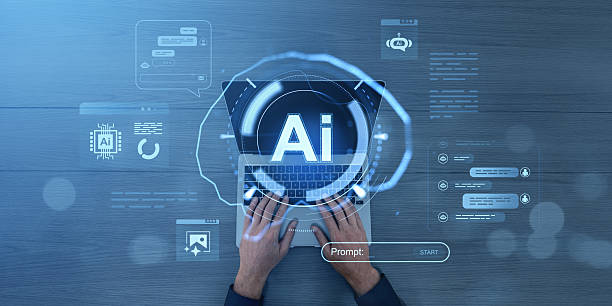
Machine Learning is an important subfield of Artificial Intelligence that allows machines to learn from data without explicit programming.
Machine learning involves algorithms that can identify patterns and relationships in data and make predictions or decisions based on them.
Machine learning is divided into three main categories: Supervised Learning, Unsupervised Learning, and Reinforcement Learning.
In #Supervised_Learning, the algorithm is trained using labeled data.
Labeled data includes inputs and desired outputs.
The algorithm attempts to create a model that can predict correct outputs for new inputs.
Examples of supervised learning include Classification and Regression.
In classification, the goal is to predict a category or class for a new input.
For example, a spam detection system can be trained using supervised learning to distinguish spam emails from legitimate ones.
In regression, the goal is to predict a numerical value for a new input.
For example, a housing price prediction system can be trained using supervised learning to predict housing prices based on various housing features.
In #Unsupervised_Learning, the algorithm is trained using unlabeled data.
Unlabeled data only includes inputs, and there are no desired outputs.
The algorithm attempts to identify patterns and structures present in the data.
Examples of unsupervised learning include Clustering and Dimensionality Reduction.
In clustering, the goal is to group similar data into a cluster.
For example, a customer segmentation system can use unsupervised learning to categorize customers into different groups based on their various characteristics.
In dimensionality reduction, the goal is to reduce the number of features used to describe the data.
This can help simplify models and improve their performance.
In #Reinforcement_Learning, the algorithm learns through interaction with an environment.
The algorithm performs actions in the environment and learns how to improve its performance based on the rewards or penalties it receives.
Examples of reinforcement learning include video games, robotics, and recommender systems.
Resources for Learning and Training in Artificial Intelligence
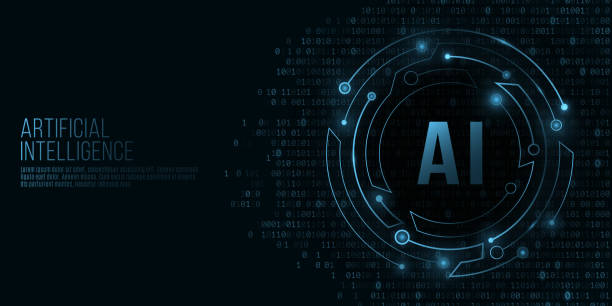
Resources for learning and training in Artificial Intelligence are highly diverse and include online courses, books, scientific articles, and practical projects.
To begin learning AI, you can use free or paid online courses.
Websites like Coursera, edX, and Udemy offer a variety of courses in AI.
These courses typically include instructional videos, exercises, and practical projects.
In addition to online courses, books are also valuable resources for learning AI.
Many books on AI cover basic and advanced concepts in this field.
Some famous books on AI include “Artificial Intelligence A Modern Approach” by Stuart Russell and Peter Norvig, “Machine Learning” by Tom Mitchell, and “Deep Learning” by Ian Goodfellow, Yoshua Bengio, and Aaron Courville.
Scientific articles are also important resources for learning AI.
Scientific articles typically present the results of new research in the field of AI.
To access scientific articles, you can use scientific databases such as Google Scholar and ScienceDirect.
In addition to theoretical resources, practical projects also play a significant role in learning AI.
By undertaking practical projects, you can implement theoretical concepts in practice and improve your skills.
You can use ready-made projects or design your own.
To start, you can use simple projects such as image recognition, text classification, and price prediction.
Frequently Asked Questions
| Question | Answer |
|---|---|
| 1. What is Artificial Intelligence (AI)? | It is a branch of computer science that aims to create machines capable of simulating human intelligence and performing tasks that require human thought, such as learning, problem-solving, and decision-making. |
| 2. What are the main types of Artificial Intelligence? | They can be classified into Narrow AI, which focuses on a specific task; General AI, which possesses comprehensive human capabilities; and Super AI, which surpasses human intelligence. |
| 3. Mention some common applications of Artificial Intelligence in our daily lives. | These include voice assistants (like Siri and Alexa), recommendation systems (like Netflix and Amazon), self-driving cars, facial recognition systems, and spam filters. |
| 4. What is the difference between Artificial Intelligence and Machine Learning? | Artificial Intelligence is the broader concept of creating intelligent machines, while Machine Learning is a subset of AI that focuses on enabling systems to learn from data without explicit programming. |
| 5. What is Deep Learning? | It is a subset of Machine Learning that uses multi-layered artificial neural networks (deep neural networks) to process data and discover complex patterns, and it is used in image and speech recognition. |
| 6. What are the main benefits of Artificial Intelligence? | Improving efficiency and productivity, automating repetitive tasks, making better decisions based on big data analysis, and developing solutions for complex problems in fields such as medicine and science. |
| 7. What are the main challenges facing the development and deployment of Artificial Intelligence? | These include the need for massive amounts of high-quality data, privacy and security issues, bias in data and algorithms, and high development and maintenance costs. |
| 8. Does Artificial Intelligence raise ethical or social concerns? | Yes, it raises concerns related to privacy, algorithmic bias, job displacement due to automation, accountability for errors made by intelligent systems, and the need for a regulatory framework. |
| 9. How can Artificial Intelligence affect the future of the job market? | It can lead to the automation of some routine jobs, but it will also create new jobs that require advanced skills in developing, operating, and maintaining AI systems. |
| 10. What are some recent or promising technologies in the field of Artificial Intelligence? | These include advanced Natural Language Processing (NLP) (such as large language models like ChatGPT), computer vision, robotics, and Generative AI. |
And other advertising services from Rasaweb Advertising Agency in the field of advertising
- Smart Google Ads: A dedicated service for growth in website traffic based on Google Ads management.
- Smart Conversion Rate Optimization: A fast and efficient solution for digital branding, focusing on attractive UI design.
- Smart Custom Software: A novel service to increase user engagement through SEO-driven content strategy.
- Smart Conversion Rate Optimization: An effective tool for online growth with custom programming.
- Smart Marketing Automation: A creative platform to improve sales increase through marketing automation.
And over a hundred other services in internet advertising, advertising consultation, and organizational solutions.
Internet Advertising | Advertising Strategy | Advertorials
Sources
Opportunities of Artificial Intelligence in Iran’s Economy
Challenges of AI Development and Countermeasures
Artificial Intelligence: Future-Maker or Threat-Creator?
Complete Guide to Understanding AI Concepts
? To boost your business in the digital world and reach the pinnacles of success, Rasaweb Afarin Digital Marketing Agency, specializing in user-friendly website design and innovative online strategies, is your comprehensive solution.
📍 Tehran, Mirdamad Street, next to Bank Markazi, Southern Kazeroun Alley, Ramin Alley, No. 6

